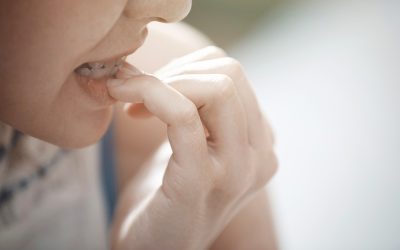When it comes to regular flossing, we’re always looking for loopholes. Although we know flossing is an essential component of a good oral hygiene routine, in practice it can be messy, time-consuming, and sometimes even painful. String floss irritates sensitive gum lines and it is difficult to maneuver into the back corners of our mouths. For these reasons, many people prefer to use a waterpik flosser for their everyday flossing needs. Waterpik flossers – also called oral irrigators or dental water jets – work by shooting bursts of high-pressure water that dislodge food particles caught between the teeth and rinses bacteria off the surface of teeth. So what are the pros and cons of waterpik flossers and how do they stack up to traditional string flossing?
Pros:
- Waterpik flossers are an excellent way to target hard-to-reach spots when you have braces, implants, crowns, bridges, or extensive dental equipment in your mouth. The stream of water is able to work around wires and hardware that string floss is unable to wiggle into and remove pieces of food and plaque.
- Oral irrigation is a gentler method of flossing if you have sensitive gums or gum disease. A jet stream of water will not cut against your gum-line and cause it to bleed, as string floss sometimes can. And waterpiks are able to flush food, debris, and plaque out of deep pockets that develop during the progression of gum disease.
- Waterpik flossers are also helpful if you have arthritis or if you find it challenging to work string floss around in your mouth.
Cons:
- The first of two major downsides is that waterpik flossers are more costly than regular string floss. The equipment itself can cost up to $50, and that is not including the price of extra heads for the device, which need to be replaced every 3 – 6 months. Waterpiks are bulky and they require electricity, which limits their mobility. In comparison, dental floss is cheap, widely accessible, and mobile. It’s easy to tuck a pack in your suitcase when you are leaving town for vacation.
- The second downside is that dental water jets are simply not as effective at removing plaque as string floss is. Plaque is resilient; it clings to the teeth and is hard to fully remove. Waterpiks function by a rinsing method, which can leave sticky plaque behind – the dental floss scraping method physically tears buildup away from the teeth.
In conclusion, while waterpik flossers are proven to work in plaque, food, and bacteria removal, they should not be used as a substitute for good old dental floss. In fact, a good flossing routine includes both: First use dental floss to dislodge trapped particles and sticky plaque and then use an oral irrigator to flush the debris out of your mouth. The effectiveness of string floss is no flimsy string theory – flossing is a necessary part of keeping your mouth and gums clean, healthy, and free of decay. If you have questions about how to floss correctly or where to find a good waterpik flosser, call our office at Boyett Family Dentistry at 863-294-9200 or send us an email through our website. We’re always happy to help keep a smile on your face.






